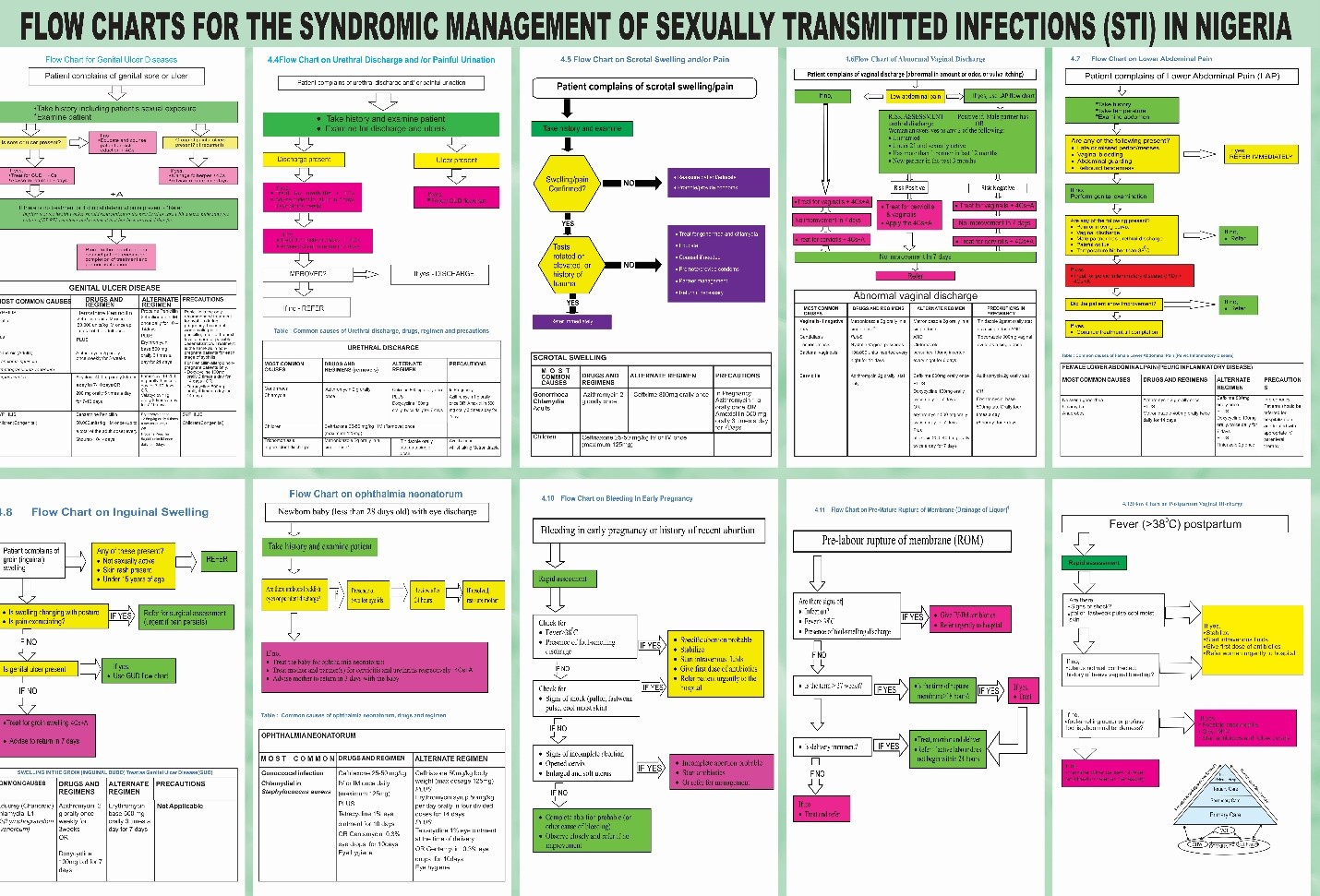SUMMARY OF THE SYNDROMIC MANAGEMENT OF STIs & RTIs IN NIGERIA
Background
Globally, Sexually Transmitted Infections (STIs) remains a very important public health problem, and with the emergence of HIV and AIDS pandemic, it has become imperative for a more coordinated approach to reduce its burden. It is estimated globally that 499 million new cases of curable STIs occur each year. These consists of 10.6 million cases of Syphilis, 106.1 million cases of Gonorrhea, 105.7 million cases of Chlamydia and 276.4 million cases of Trichomoniasis. These figures do not include the additional health burden caused by HIV and other viral STIs such as Herpes Simplex Virus Infection. While data on incidence of STIs is not readily available, the report of the 2013 National Demographic and Human Survey (NDHS) indicated that 4 percent of women and 2 percent of men in Nigeria experienced a Sexually Transmitted Infection and/or abnormal genital discharge or sore 12 months prior to the survey.
The public health importance of STIs/RTIs is indisputable because they are associated with significant socio-economic consequences. These include: cost of treatment and absenteeism from work, social stigmatization, psychological consequences and infertility. Untreated STIs/RTIs can lead to loss of employment and broken marriages leading to disruption of the family unit.
In view of the above, a syndromic approach to management of STIs/RTIs makes treatment accessible and affordable to a majority of the population because trained workers at all levels can use it as this approach does not require the use of sophisticated equipment, but a flow chart of symptoms presented by patient and signs elicited by the health care provider is used is used for treatment.
Therefore, the goal of STIs/RTIs syndromic management is not only to cure the patient but also to break the chain of transmission, avoid complications, patient education, partner treatment, provision of condoms, diagnosis and prescription. The objectives of STIs/RTIs management are:
The components of syndromic management are: Building the capacity of the health care provider, provision of counselling for STIs/RTIs, identifying /treating all STIs/RTIs syndromes, conducting risk assessment, specific antimicrobial therapy, partner notification, prevention of ophthalmia neonatorum, prevention of mother-to-child transmission of HIV,using aetiologic approach of management at secondary/tertiary healthcare levels and lastly data collection/management.
There are over 20 types of STIs (bacteria vaginosis, gonorrhea, chlamydia, syphilis, chancroid, granuloma inguinale, lymphogranuloma venereum, yeast infection, HIV infection, Hepatitis Band C infections etc) caused by bacterial, fungi, virus, protozoa, mite and crab louse among others but the most common presentations are : discharge from the penis, vagina, sores/wounds on the genital parts of both men and women, abnormal swelling of the lymph nodes/groin and abnormal growth on the genital parts or other neighboring areas in both men and women.
The above infections can be endogenous, sexually transmitted or iatrogenic in nature and can be prevented by the following measures:.
There is the risk assessment for all patients presenting with symptoms of STIs and anyone who falls into two or more of the categories listed in the assessment is considered to be “risk assessment positive” and is assessed based on the flow charts that fits his/her symptoms. There are varieties of flow charts describing steps to be taken in managing a patient with STI using the syndromic approach.
Other STIs/RTIs not covered under the syndromic management includes: HPV infection/cervical cancer screening, anogenital warts, scabies and pubic lice. STIs/RTIs in neonates and pre-pubertal age groups including sexual violence were discussed in details in the National Guidelines on the Syndromic Management of Sexually Transmitted Infections (STIs) and other Reproductive Tract Infections (RTIs) developed by the National AIDS and STI’s Control Programme (NASCP) in the Federal Ministry of Health, Abuja in 2016.
Graphical chart of the flowchart
In conclusion, integration of STIs/RTIs services into the health facilities across the country is very vital and this will require the following: Adequate trained staff materials/equipment/supplies, effective referral linkages, data collection/reporting, community engagement/education and leveraging on youth friendly approaches to target young people. If this integration is done effectively, then it will help to address emerging issues in antimicrobial resistance especially to gonorrhea and the clinical management of STIs among key populations.
The Flow Chart

